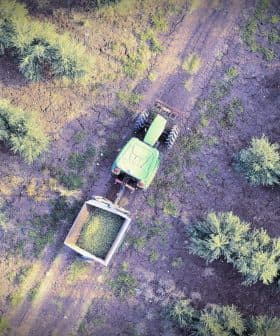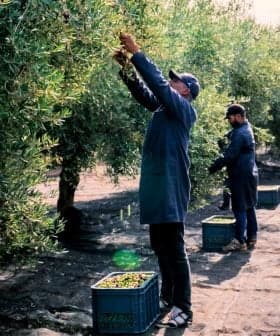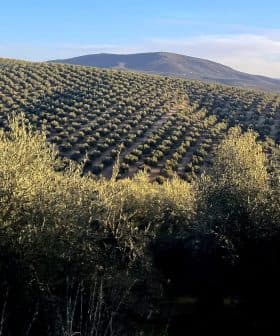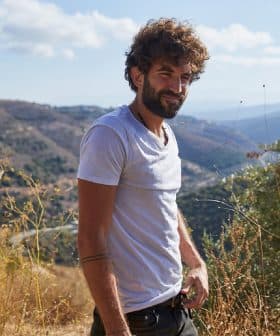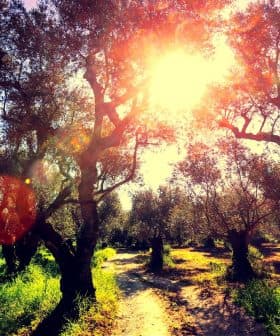Climate Change Leads Some Bordeaux Wine Producers to Plant Olives
Farmers in the western French department of Gironde have met with national production officials to discuss the future of olive oil production in the non-traditional area.
 Saint Emilion, Bordeaux
Saint Emilion, Bordeaux In Gironde, France, olive growers, professional organizations, and local institutions are exploring the potential of olive farming in the region, known for its vineyards and wine production. New olive groves are being planted by wine producers and southern farmers moving to the area, with the climate change making Gironde a suitable place for olive growing and oil production. Challenges such as water management, lack of infrastructure, and the unknown profitability of olive farming in the region are being faced by local growers, who are considering diversifying their agricultural practices.
In the southwestern French department of Gironde, olive growers, professional organizations and local institutions are exploring potential olive farming opportunities in the region.
While Gironde, especially Bordeaux, is globally renowned for its vineyards and wine production, some growers are beginning to plant olive trees. The new groves have mostly been the initiative of wine producers and southern French farmers moving to the region.
There’s a wine crisis in the Bordeaux region among small wine producers who are faced with an uncertain cash flow and unsold wine stocks… The olive tree could be a solution for them.
According to France Olive, a producer association, climate change has turned Gironde into an interesting place to experiment with olive growing and oil production.
“Here, just as elsewhere, we have been witnessing traditional southern cultivation going north, and the olive tree is no exception to this rule,” Hélène Lasserre, the director of conservation and research at France Olive, told Olive Oil Times.
See Also:Farmers in France Confirm Grim Predictions as Harvest Gets Underway“Olive cultivation used to stop at the edge of Carcassonne, the medieval city north of Narbonne,” she added. “In the last 18 years, random projects have quietly emerged in the Toulouse region, and now they have spread close to Bordeaux. The olive tree, if it does not freeze, seems to sustain the climate from a physiological point of view.”
Gironde typically features a temperate climate. Temperatures rarely fall below freezing, and the region experiences relatively cool summers, with the warmest months seldom exceeding 30 ºC. Gironde is also moderately wet, with up to 355 millimeters of precipitation annually.
In 2018, Bernard and Françoise Saïn retired from their previous farming activities in southern France and decided to move to Aillas, not far from Bordeaux, where they planted a few hectares of olive trees.
In the following three years, they planted more than 600 Picholine, Aglandau, Cayon and Bouteillan trees.
According to local media reports, the couple started to build an olive mill to produce oil from their annual harvest. Other local farmers are considering following the same path.
Some of the new olive groves of the region come from the initiative of wine producers who are struggling with the impacts of climate change on the wine sector. For them, olive trees are seen as a way to diversify.
“There’s a wine crisis in the Bordeaux region among small wine producers who are faced with an uncertain cash flow and unsold wine stocks,” Lasserre said.
“This mostly concerns the southern portion of the Bordeaux region, not the Médoc nor its grand crus,” she added. “Given this scenario, many are starting to tear down the vineyard and are looking for alternatives and new agricultural products.”
“The olive tree could be a solution for them as well as the almond tree and kiwi,” Lasserre continued, adding how an estimated 15 percent of the vineyards should be closed to keep the sector afloat.
However, Lasserre acknowledged that the few olive growers in the region face several challenges, such as the lack of water management infrastructure in an area where irrigation for vineyards does not exist.
“The problem is water management, availability and the right of use in an area where it has not been a priority in land use planning,” she said.
“We always think of Bordeaux as close to the ocean and, therefore, a rather wet area, but this region is not spared by climate change,” Lasserre added. “The current season is an example of this. It was a year of drought for the region as it was elsewhere. Therefore, growing olives without irrigation in this area is unthinkable if one looks to production and profitability.”
During the meeting, Fabien Bougès, a local farmer, noted how it is impossible to know beforehand how the olive trees he planted in 2019 would fare.
“We planted 14 different cultivars as a test to identify which ones might be more suited for our region,” he said.
Bougès managed 34 hectares of vineyards for a long time before diversifying as the wine crisis began to affect his farm. “We have to deal with climate change and try to plant species that come from the south, which might be more resilient to drought and the hot weather,” he said.
Lasserre confirmed the challenges posed by the region’s lack of an olive-growing history. “It is not that we need to re-learn how to grow olives. Growers here have to learn how to from scratch,” she said.
“One technical problem is that we do not know how the olive tree reacts to this oceanic climate – wet in spring and autumn, mild in winter – which is conducive to the development of foliage diseases such as peacock eye and cercosporiose,” Lasserre added.
“To me, the control of this sanitary aspect is essential for olive tree development and its productivity, in short, for the success of olive growing in Gironde,” she continued. “That is because the intensity of the healthy foliage derives the well-being and productivity of the tree.”
The lack of olive transformation facilities in the region is another challenge for local growers cited by Lasserre.
Furthermore, it is proving difficult to convince wine producers to put in years of time and capital to grow olive trees and build a mill when the potential profitability remains unknown.
Still, Lasserre argued that combining wine and olive farming might bring some benefits in terms of fostering biodiversity, enriching the landscape and protecting the environment, a practice that has taken place in parts of France since the Middle Ages.
Currently, France produces approximately 4 percent of the olive oil consumed in the country, a figure that has not changed significantly over the last 20 years.
France Olive noted that while production volumes are low, about 5,000 tons per annum in good crop years, the value of olive oil is high. “Thirty percent of our groves are organic, and more than a quarter of those are Protected Designation of Origin certified,” Lasserre said.
In Gironde, the debate over the future of olive oil has started. “So far, apart from a few pioneers who are very few, we are at a stage where we share thoughts [about this possible development],” Lasserre said.
“That is why we had the meeting, to introduce those pioneers to the French olive sector and to the key facts to take into consideration while debating about starting new olive groves,” she concluded.
Share this article



